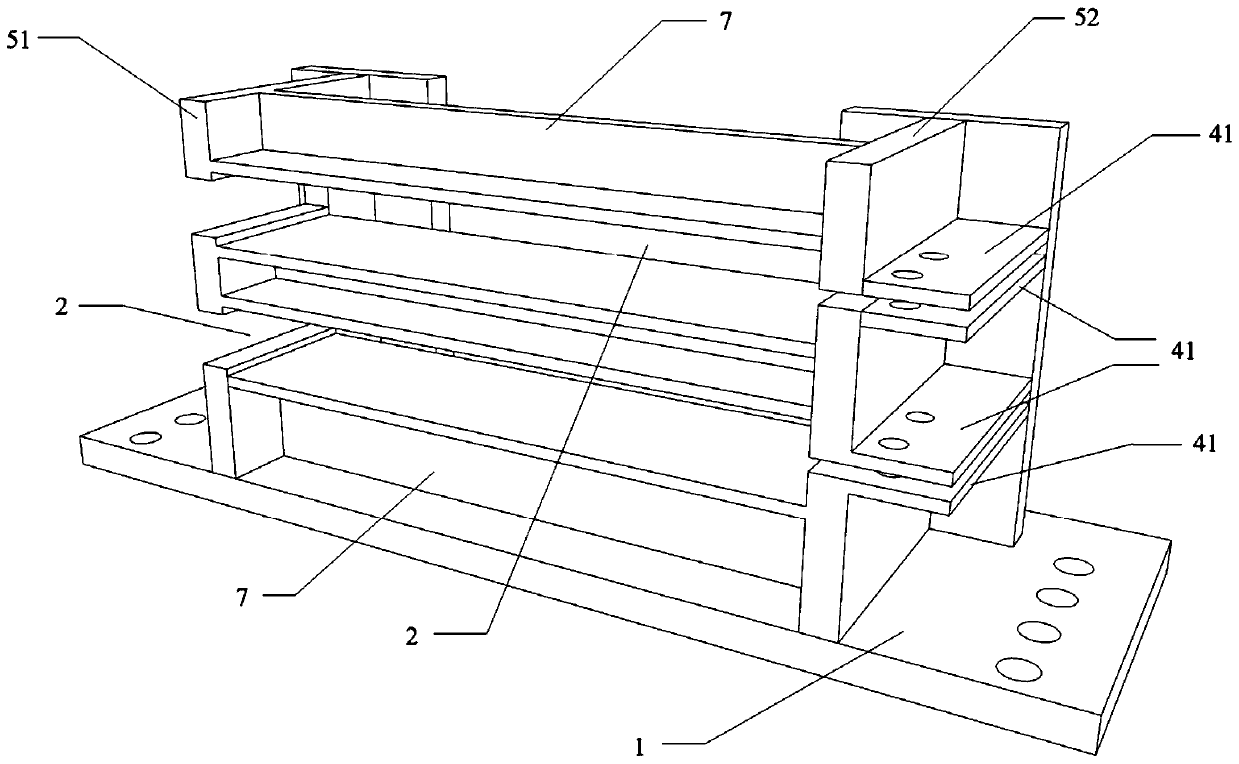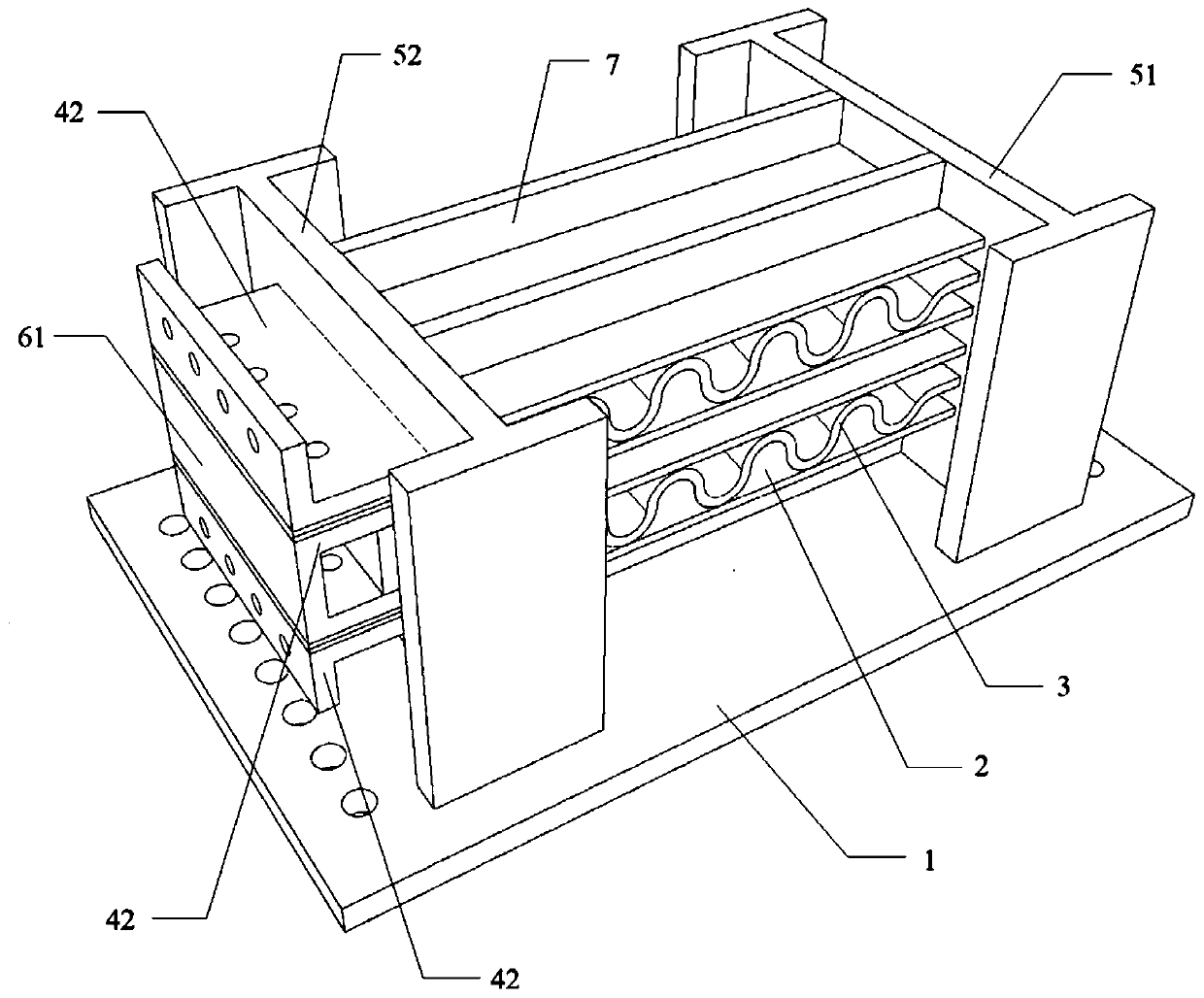Shock absorption and energy dissipation anti-falling beam device for railway bridge
A technology for anti-fall beams and bridges, applied in bridges, bridge construction, bridge parts, etc., can solve the problems of anti-fall beam stoppers such as lack of seismic energy consumption capacity, complicated design, increased cost, etc., and achieve good application prospects, The effect of simplifying the design and increasing the contact area
- Summary
- Abstract
- Description
- Claims
- Application Information
AI Technical Summary
Problems solved by technology
Method used
Image
Examples
Embodiment 1
[0034] Such as Figure 1-3As shown, a kind of shock-absorbing and energy-dissipating anti-drop beam device for railway bridges according to the present invention includes a steel base plate 1, a partition one 51 and a partition two 52, and the partition one 51 and the partition two 52 are all connected to the bottom plate 1, and the bottom plate 1 is provided with at least one limiting groove 2, such as the example of this embodiment, there are two limiting grooves 2, the specific number is determined according to the energy consumption capacity requirement and the installation space, two Two limit grooves 2 are aligned and arranged in sequence along the height direction. Specifically, the limit groove 2 can be formed by two frames, or two side plates, or one side is a frame and the other side is a side plate. In this implementation For example, it is formed by two steel side plates, and a limiting groove 2 is formed between the two side plates. The height of the limiting groo...
Embodiment 2
[0038] A shock-absorbing and energy-dissipating anti-drop beam device for a railway bridge according to the present invention has the same structure as that of Embodiment 1, the difference being that all the corrugated plates 3 are replaced by corrugated steel pipes, and each corrugated steel pipe The two ends are replaced by tubular sections, such as flat, that is, the cross section of the tubular section is oval, and the tubular sections at both ends are used to connect the first splint 41 and the second splint 42 respectively. If bolted connection is adopted, preferably, the first splint The shape of the inner wall of 41 and the second splint 42 is adapted to the shape of the outer wall of the tubular section, and the through hole is adapted to the shape of the tubular section, so that the tubular sections at both ends can be connected with the first splint 41 and the second splint 42 respectively.
PUM
 Login to View More
Login to View More Abstract
Description
Claims
Application Information
 Login to View More
Login to View More - R&D
- Intellectual Property
- Life Sciences
- Materials
- Tech Scout
- Unparalleled Data Quality
- Higher Quality Content
- 60% Fewer Hallucinations
Browse by: Latest US Patents, China's latest patents, Technical Efficacy Thesaurus, Application Domain, Technology Topic, Popular Technical Reports.
© 2025 PatSnap. All rights reserved.Legal|Privacy policy|Modern Slavery Act Transparency Statement|Sitemap|About US| Contact US: help@patsnap.com



